Ever found yourself scratching your head, wondering if that chunky rodent by the water is a nutria or a capybara? You’re not alone. These semi-aquatic creatures often get mixed up, but they’re as different as apples and oranges. Let’s dive into the nitty-gritty of nutria vs capybara and clear up the confusion once and for all.
The Basics: What Are Nutria and Capybara?
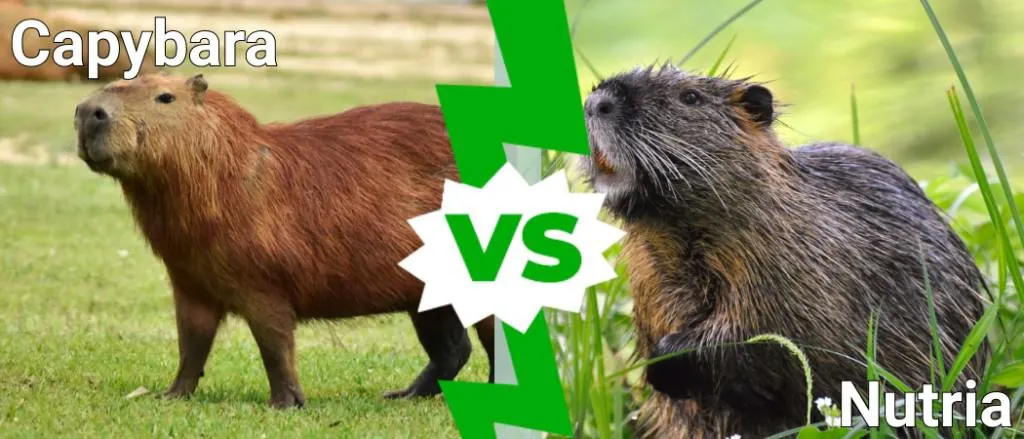
First things first, let’s get our facts straight. Nutria and capybara are both rodents that love the water, but that’s where the similarities end.
Nutria: The Invasive Outsider
Nutria, also known as coypu, are like the unwanted guests at a party. Originally from South America, these guys have crashed ecosystems worldwide. They’re medium-sized rodents with a rat-like appearance and a bad reputation for destroying wetlands.
Capybara: The Gentle Giant
On the flip side, capybaras are the chill cousins of the rodent world. Native to South America, these oversized guinea pigs are the largest rodents on Earth. They’re known for their docile nature and have become internet celebrities for their laid-back attitude.
Size Matters: The Big Difference
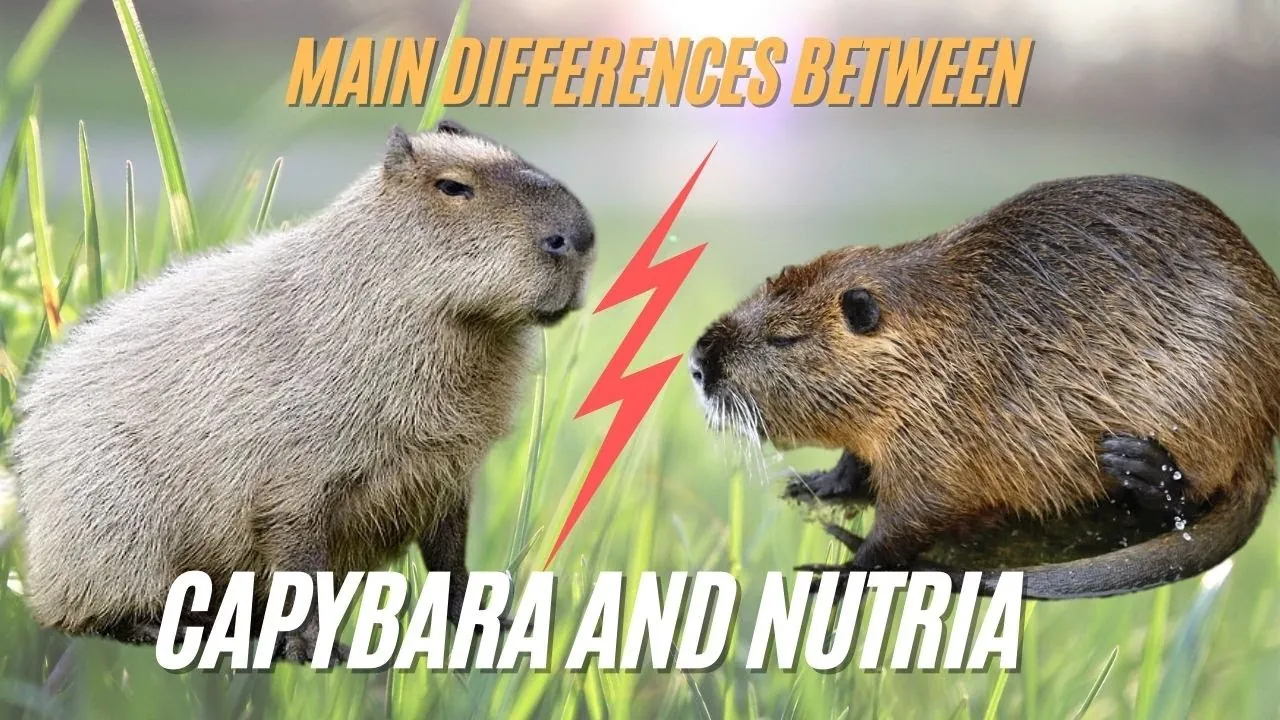
When it comes to size, there’s no contest between nutria and capybara.
Nutria: The Middleweight
Nutria are no lightweights, but they’re not breaking any records either. These guys typically weigh in at:
- 15-20 pounds
- 2-2.5 feet long
Capybara: The Heavyweight Champ
Capybaras, on the other hand, are absolute units. We’re talking:
- Up to 150 pounds
- 4-4.5 feet long
To put it in perspective, a capybara is like a Saint Bernard, while a nutria is more like a chunky cat.
Looks Can Be Deceiving: Physical Characteristics
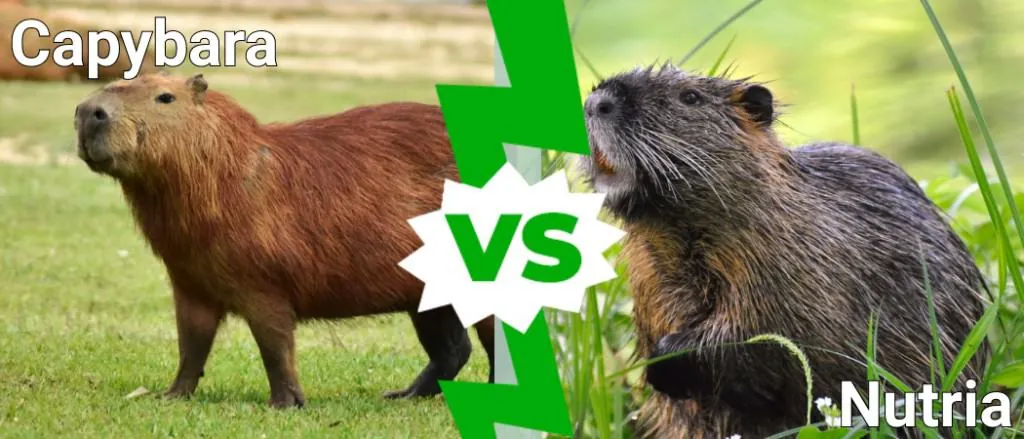
At first glance, nutria and capybara might look similar, but let’s break down their physical features.
Nutria: The Rat Look-Alike
Nutria have some distinct features:
- Long, round tails
- Orange teeth (yes, you read that right)
- Webbed hind feet
- Coarse, dark brown fur
Capybara: The Giant Guinea Pig
Capybaras have a whole different vibe:
- Barrel-shaped bodies
- Short, blunt snouts
- Webbed toes on all four feet
- Coarse, reddish-brown fur
Habitat and Lifestyle: Where You’ll Find Them
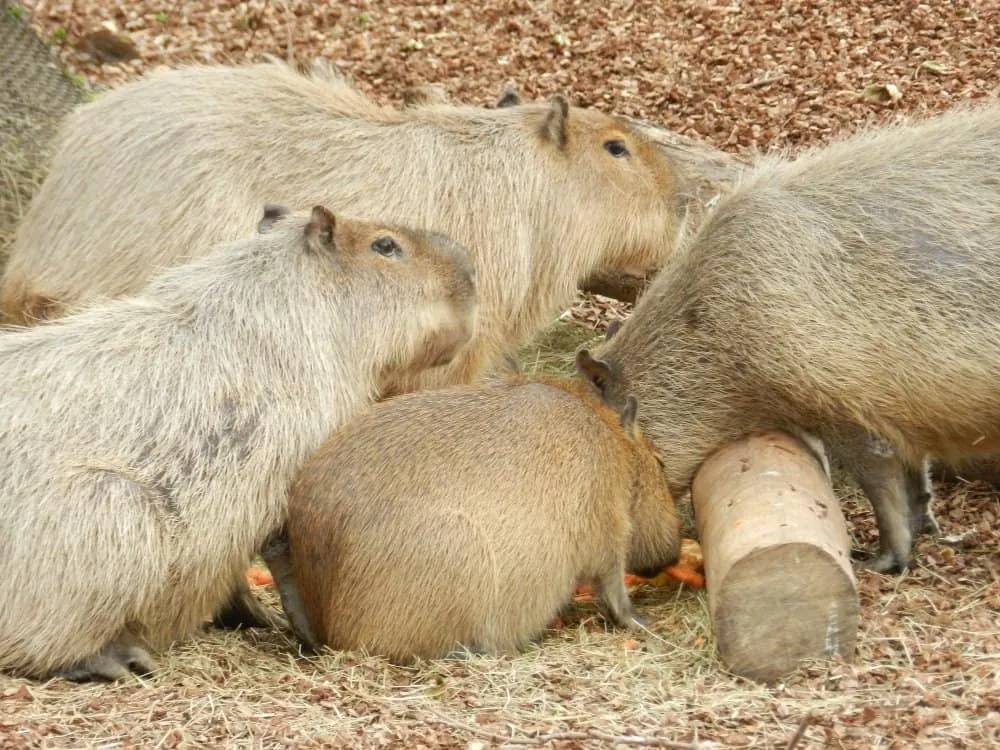
Both nutria and capybara love the water, but their preferred hangouts differ.
Nutria: The Wetland Invader
Nutria are adaptable squatters. You’ll find them in:
- Freshwater marshes
- Swamps
- Slow-moving rivers
- Even urban areas near water
They’re notorious for digging burrows in riverbanks, causing erosion and damaging ecosystems.
Capybara: The Social Lounger
Capybaras are all about that community life. They prefer:
- Grassy areas near water
- Savannas
- Tropical forests
- Marshes
These social butterflies live in groups of 10-20, sometimes even up to 100 during dry seasons.
Diet: What’s on the Menu?
Both nutria and capybara are herbivores, but their dining habits differ.
Nutria: The Destructive Diner
Nutria are like that friend who raids your fridge and leaves a mess. They eat:
- Aquatic plants
- Roots and tubers
- Bark from trees
- Agricultural crops (much to farmers’ dismay)
Their feeding habits can devastate wetland ecosystems, earning them the title of invasive species in many areas.
Capybara: The Grazing Gourmand
Capybaras are more like polite dinner guests. Their menu includes:
- Grass (lots of it)
- Aquatic plants
- Bark
- Fruits
They’re even known to eat their own poop to aid digestion. Gross? Maybe. Efficient? Definitely.
Behavior: Party Animal vs. Chill Pill
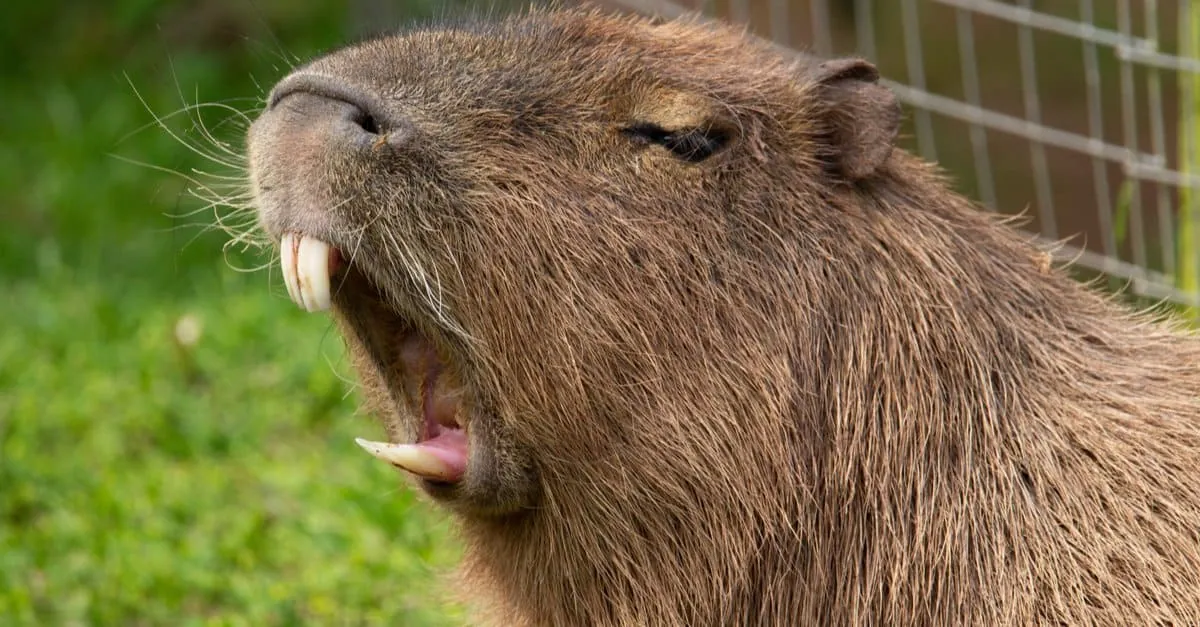
The behavior of nutria and capybara couldn’t be more different.
Nutria: The Night Owl
Nutria are like the nocturnal party animals of the rodent world:
- Mostly active at night
- Aggressive when cornered
- Solitary or in small family groups
- Excellent swimmers and divers
Capybara: The Social Butterfly
Capybaras are the definition of chill:
- Active during the day
- Extremely social and friendly
- Live in large groups
- Love lounging in water or mud
They’re so relaxed that other animals often use them as living chairs!
Environmental Impact: Friend or Foe?
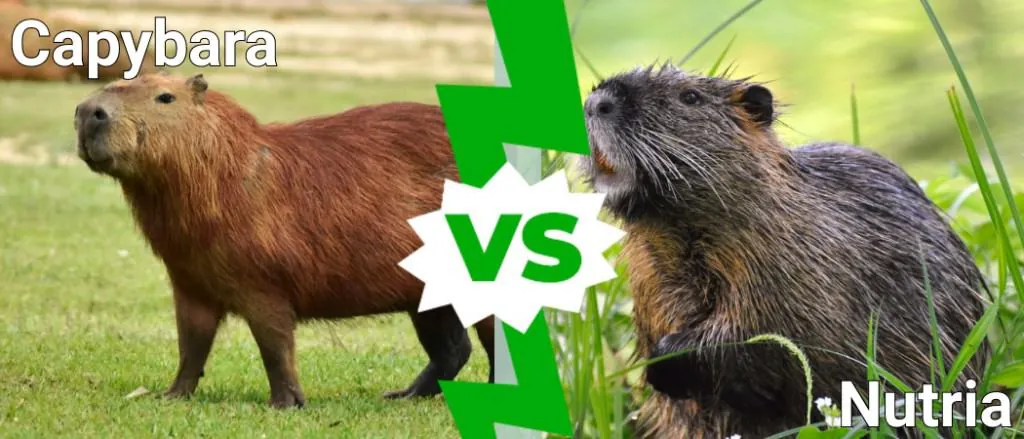
When it comes to their impact on the environment, nutria and capybara are on opposite ends of the spectrum.
Nutria: The Ecosystem Destroyer
Nutria are like that houseguest who overstays their welcome and trashes your place:
- Destroy wetland habitats
- Cause soil erosion
- Compete with native species for food
- Damage crops and infrastructure
Capybara: The Ecosystem Balancer
Capybaras, on the other hand, are more like helpful neighbors:
- Play a role in seed dispersal
- Provide food for predators
- Help maintain grassland ecosystems
- Generally live in harmony with their environment
FAQs: Your Burning Questions Answered
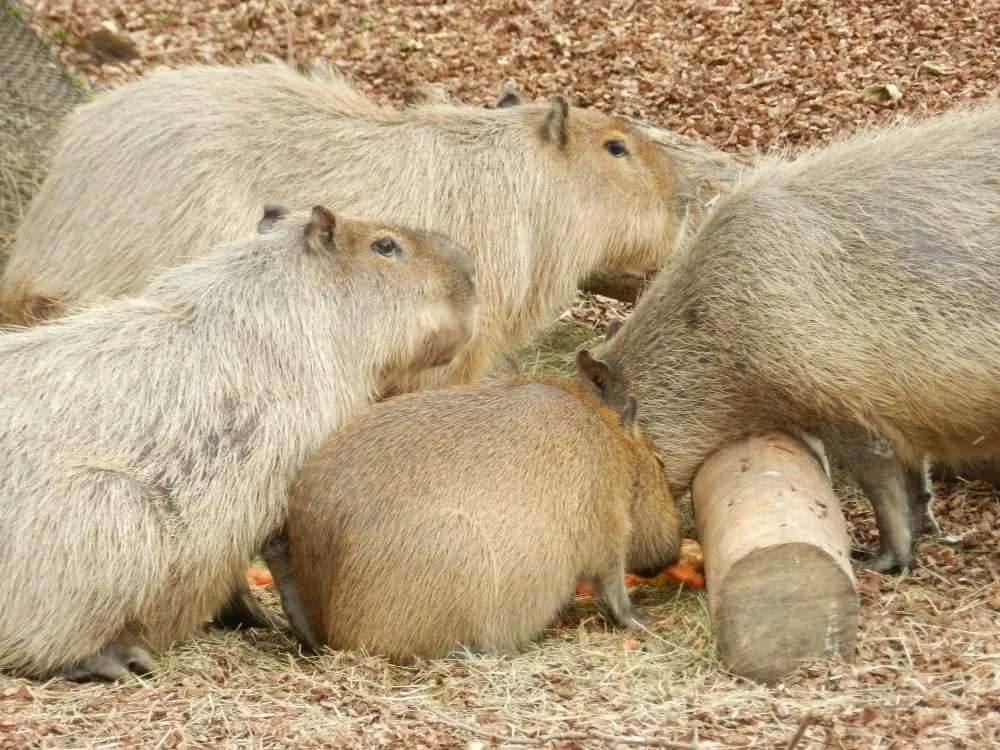
Got questions? I’ve got answers. Here are some common head-scratchers about nutria vs capybara:
- Are nutria and capybara related?
While both are rodents, they’re not closely related. Nutria belong to the Myocastoridae family, while capybaras are part of the Caviidae family. - Can nutria and capybara interbreed?
Nope, not a chance. They’re too different genetically. - Are nutria or capybara dangerous to humans?
Nutria can be aggressive when cornered and may carry diseases. Capybaras are generally docile but can be territorial during mating season. - Can you keep nutria or capybara as pets?
It’s illegal to keep nutria as pets in many places due to their invasive status. Capybaras can be kept as exotic pets in some areas, but they require specialized care and lots of space. - How long do nutria and capybara live?
Nutria typically live 6-12 years in the wild, while capybaras can live up to 10-12 years.
The Bottom Line: Nutria vs Capybara
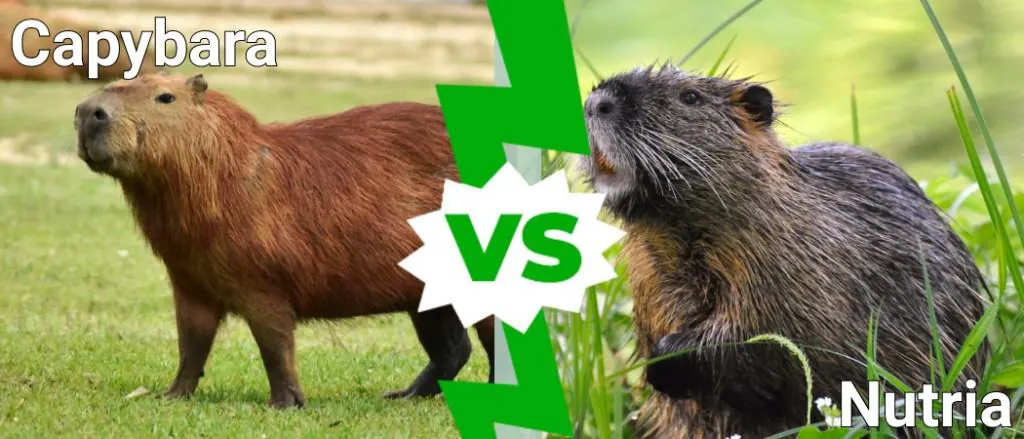
When it comes to nutria vs capybara, it’s clear these rodents are worlds apart. Nutria are invasive troublemakers, while capybaras are gentle giants living their best life. Next time you spot a large rodent by the water, you’ll know exactly what you’re looking at.
Remember, while nutria might be a pest, they’re just trying to survive in a new environment. And capybaras? Well, they’re just out there living their best life, one lazy river float at a time. So whether you’re dealing with a nutria invasion or dreaming of lounging with capybaras, now you’re armed with the knowledge to tell these aquatic rodents apart.
